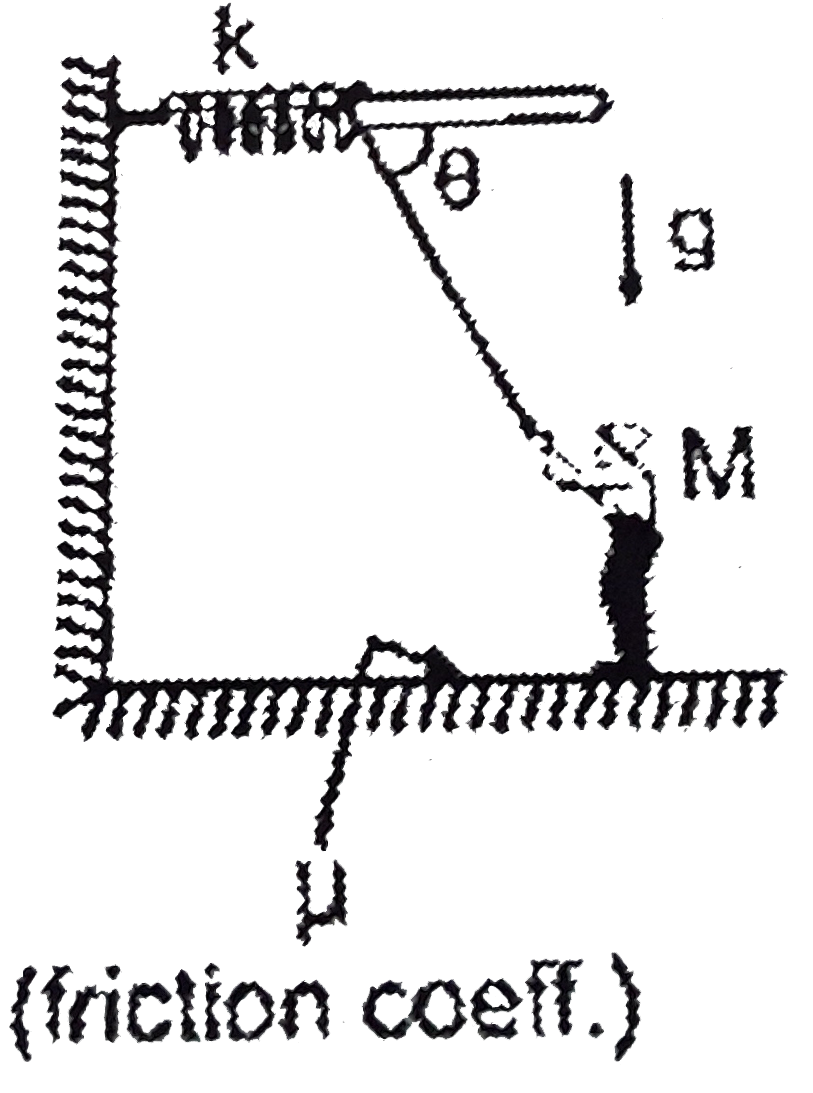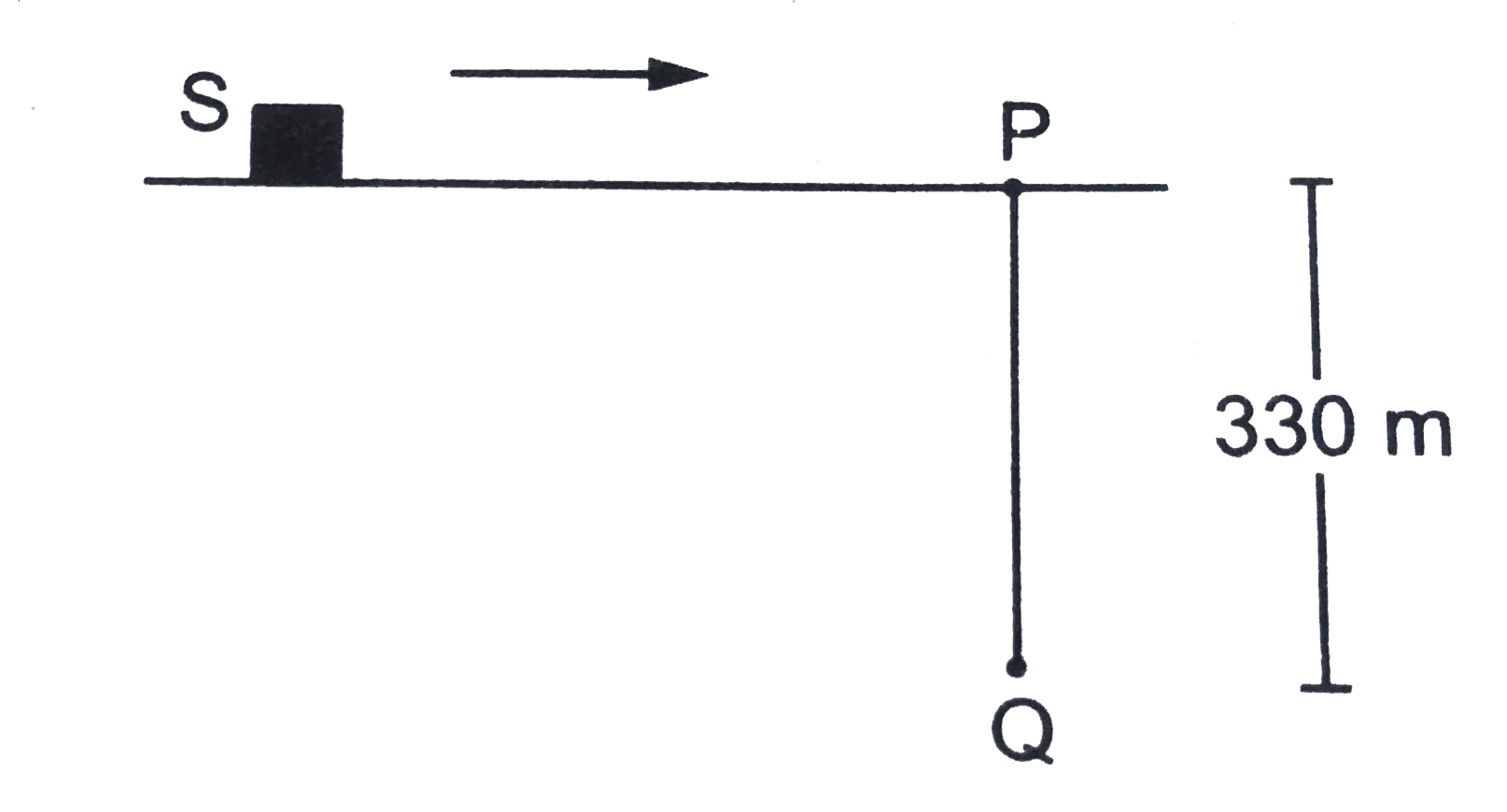A man stands on the ground at a fixed distance from a siren which emits a clear sound dirung night that during day. Explain Why?
During the day, the temperature of air in maximum near the ground and it progressively diminishes upwards Therefore the velocity of sound is greater near the ground and it decreases upwards (c∝√T). The plane wavefronts, initially vertical, are turned upwards, so the sound rays curl up during the day. At night the conditions are reversed, so sound rays curl down, producing better audibility of distant sounds.
Topper's Solved these Questions
- SOUND WAVES AND DOPPLER EFFECTBOOK - CENGAGE PHYSICSCHAPTER - SOUND WAVES AND DOPPLER EFFECTEXERCISE - Exercise 6.2
72 Videos
- SOUND WAVES AND DOPPLER EFFECTBOOK - CENGAGE PHYSICSCHAPTER - SOUND WAVES AND DOPPLER EFFECTEXERCISE - Subjective
56 Videos
- SOUND WAVES AND DOPPLER EFFECTBOOK - CENGAGE PHYSICSCHAPTER - SOUND WAVES AND DOPPLER EFFECTEXERCISE - Examples
56 Videos
- RIGID BODY DYNAMICS 2BOOK - CENGAGE PHYSICSCHAPTER - RIGID BODY DYNAMICS 2EXERCISE - Interger
2 Videos
- SUPERPOSITION AND STANDING WAVESBOOK - CENGAGE PHYSICSCHAPTER - SUPERPOSITION AND STANDING WAVESEXERCISE - Comprehension Type
5 Videos
Similar Questions
A main stands on the ground at a fixed distance from a siren which emits sound of fixed amplitude. The man hears the sound to be on a clear night than on a clear day.
View SolutionA flagstaff stands vertically on a pillar, the height of the flagstaff being double the height of the pillar. A man on the ground at a distance finds that both the pillar and the flagstaff subtend equal angles at his eyes. The ratio of the height of the pillar and the distance of the man from the pillar is
View Solution
Knowledge Check
A man throws a packet from a tower directly aiming at his friend who is standing at a certain distance from the base which is same as the height of the tower. If the packet is thrown with a speed of 4ms−1 and it hits the ground midway between the tower base & his friend than the height of the tower is (g=10ms−2)
A5mB8mC3.2 mD13mA man stands on the ground at a point A, which is on the same horizontal plane as B, the foot of a vertical pole BC. The height of the pole is 10 m . The man's eye is 2 m above the ground . He observes the angle of elevation at C, The top of the pole as x∘ where tan x∘=25 . the distance AB (in metres) is
A15 mB18 mC20 mD16 m
A plane mirror 50cm long, is hung on a vetical wall of a room, with its lower edge 50cm above the ground. A man stands of the mirror at a distance 2m away from the mirror. If his eyes are at a height 1.8m above the ground, then the length (distance between the extreme points of the visible region perpendicular to the mirror ) of the floor visible to him due to refliection from the mirror is x26m . Find the value of x
View SolutionExplain why the loudness of a sound note varies with the distance from the source of sound
View SolutionA siren is fitted on as car going towards a vertical wall at a speed of 36 km/h. A person standing on the ground, behind the car, listens to the siren sound coming directly from the source as well as that coming after refelction from the siren to the person and b. coming after reflection. Take the speed of sound to be 340ms−1
View SolutionA man with mass M has its string'.attached to one end. of a spring which can move without friction along a horizontal, overhead fixed rod. The other end of the spring is fixed to a, wall. The spring constant is k. The string is massless and inextensible and it maintains a constant angle θ with the, overhead rod, even when the man moves. There is friction, iwith coefficient μ between the man and the ground. What is, the maximum distance (in m ) that the man moving slowly can stretch the spring beyond its natural length?

View SolutionFigure shows a source of sound moving along the X-axis at a speed of 22ms−1 continuously emitting a sound of frequency 2.0 kHz which travels in air at a speed of 330∈s−1. A listener Q stands on the Y-axis at a distance of 330 m from the origin. At t = 0, the source crosses the origin P. (a) When does the sound emitted from the source at P reach the listener Q 9 (b) What will be the frequency heard by the listener at. this instant 9 (c) Where will the source be at this instant ?
 .
.
View SolutionA man stands before a large wall at a distance of 50.0 m and claps his hands at regular intervals. Initially, the interval is large. He gradually reduces the interval and fixes it at a value when the echo of a clap merges with the next clap. If he has to clap 10 times during every 3 seconds, find the velocity of sound in air.
View Solution
